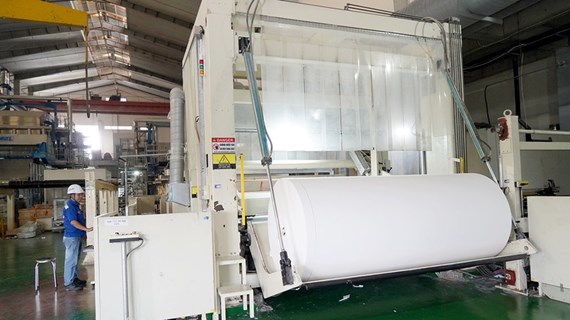Incense making village busy before Tet
Bunches of red incense sticks and their sweet smell are easily noticed
along roads and in the yards of residents in Quan Huong village, the
central province of Quang Nam, as the Lunar New Year (Tet) holiday
approaches.
Bunches of red incense sticks and their sweet smell are easily noticed
along roads and in the yards of residents in Quan Huong village, the
central province of Quang Nam, as the Lunar New Year (Tet) holiday
approaches.
Dating back nearly 200 years, the village in Ha Lam town, Thang Binh district, now has 180 households with more than 100 of them making incense.
Villagers produce incense around the year, yet the period prior to Tet is the most bustling. During these days, they have to work until 2am so as to timely deliver goods to customers from faraway.
Tran Thi Thuy, who has made incense for 16 years, said she has employed two more workers in addition to four members of her family to produce incense in the lead up to Tet.
Each labourer usually earns three million VND (143 USD) per month, but their income in this period may double that amount, she said.
Incense from Quan Huong village is special for its ingredients. They are cinnamon bark powder, a specialty of Quang Nam province, and powder from the bark of Litsea glutinosa trees in the Central Highlands, which release fragrant smoke and do not harm human health when burned.
Quan Huong village produces around 800 tonnes of incense every year, and its products are shipped to all corners of Vietnam.
In recent years, many villagers have had to make more incense in summer so as to ensure supply during Tet.
Vietnamese people believe that burning incense on ancestors’ altars is a way to deliver their wishes to their predecessors, particularly during the Tet holiday, which is a time for family members to reunite and commemorate their ancestors.-VNA
Dating back nearly 200 years, the village in Ha Lam town, Thang Binh district, now has 180 households with more than 100 of them making incense.
Villagers produce incense around the year, yet the period prior to Tet is the most bustling. During these days, they have to work until 2am so as to timely deliver goods to customers from faraway.
Tran Thi Thuy, who has made incense for 16 years, said she has employed two more workers in addition to four members of her family to produce incense in the lead up to Tet.
Each labourer usually earns three million VND (143 USD) per month, but their income in this period may double that amount, she said.
Incense from Quan Huong village is special for its ingredients. They are cinnamon bark powder, a specialty of Quang Nam province, and powder from the bark of Litsea glutinosa trees in the Central Highlands, which release fragrant smoke and do not harm human health when burned.
Quan Huong village produces around 800 tonnes of incense every year, and its products are shipped to all corners of Vietnam.
In recent years, many villagers have had to make more incense in summer so as to ensure supply during Tet.
Vietnamese people believe that burning incense on ancestors’ altars is a way to deliver their wishes to their predecessors, particularly during the Tet holiday, which is a time for family members to reunite and commemorate their ancestors.-VNA













